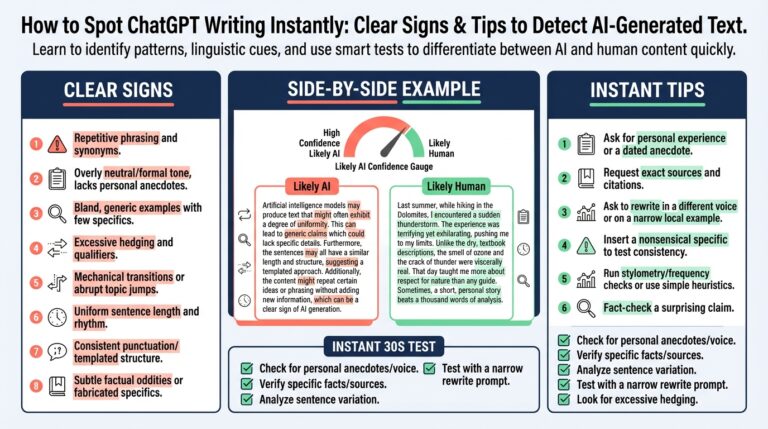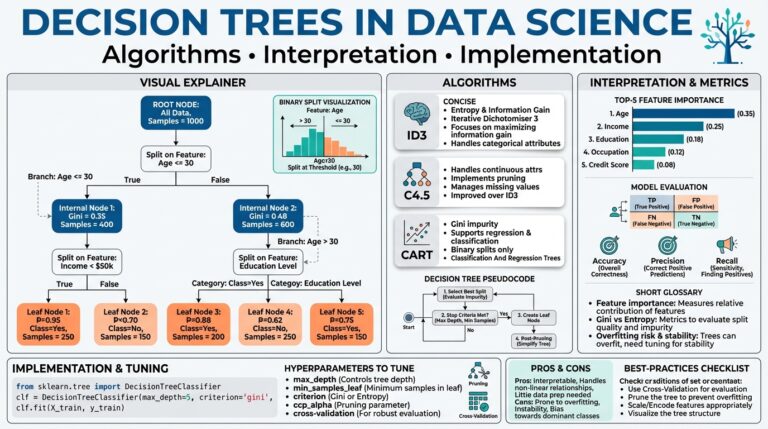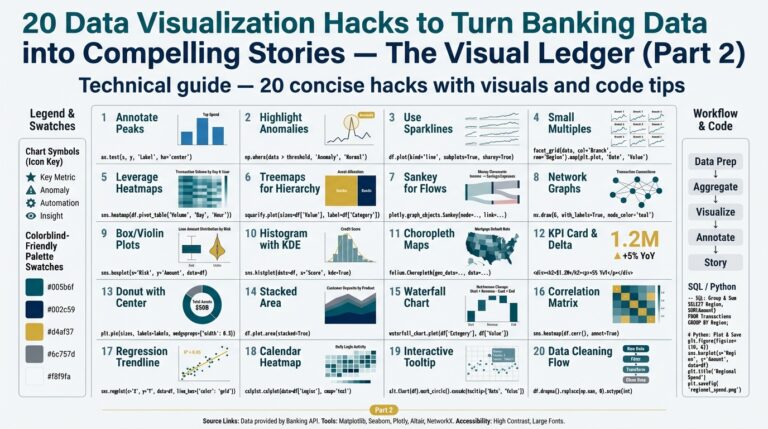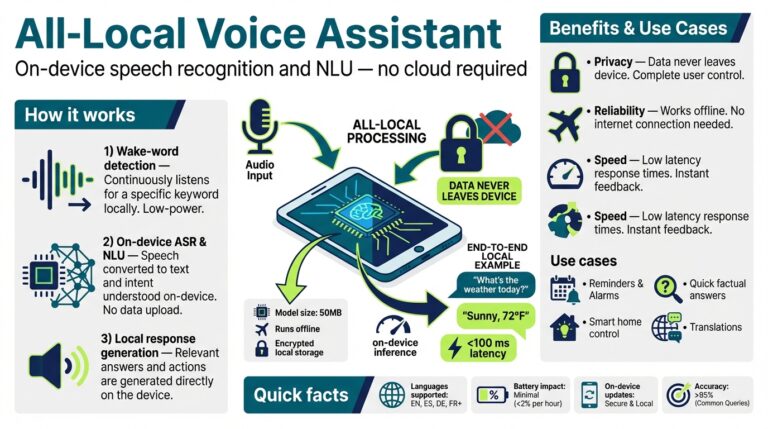What is RAG? An Overview of Retrieval-Augmented Generation
Retrieval-Augmented Generation (RAG) is a cutting-edge AI framework that combines traditional language generation techniques with the powerful ability to search through external data sources in real-time. This hybrid approach addresses one of the main challenges faced by language models: producing up-to-date, accurate, and contextually rich responses even when the required information wasn’t part of their original training data.
At its core, RAG enhances the conventional process where large language models (LLMs) generate human-like text by supplementing their outputs with results pulled from vast external databases, knowledge bases, or the internet. Instead of relying solely on what was learned during pre-training, RAG models are able to retrieve relevant content on the fly—helping bridge the gap between memorized knowledge and real-world, timely information.
The process works in several key steps:
- Query Formulation: When a user asks a question, the language model formulates an internal query based on the prompt.
- Retrieval Step: The system searches an external information source (like Wikipedia, academic databases, or proprietary knowledge stores) for relevant document snippets or passages. This search can use traditional retrieval methods like TF-IDF or more modern, neural search engines powered by dense vector embeddings from models such as Dense Passage Retriever.
- Generation Step: The retrieved documents are then fed, along with the original query, into the language generation model. The model synthesizes a response using both its internal knowledge and the newly retrieved information, resulting in a more accurate and context-rich answer.
This architecture offers several distinct advantages. First, it makes language models far more flexible and reliable for knowledge-intensive tasks, since their responses can always reference the latest external data. Second, it helps address issues like hallucinations—where models confidently provide incorrect information—by rooting answers in verifiable, retrievable sources.
For example, imagine a user asks, “What are the latest recommendations on vitamin D intake from health authorities?” A traditional LLM may give outdated information depending on when it was last trained. A RAG system, however, can retrieve the latest official guidelines from reputable sites such as the National Institutes of Health and generate a response based not only on its language understanding, but also the most current evidence available online.
Applications for RAG are expanding rapidly—ranging from enterprise search assistants and customer service bots to academic research tools. As the field evolves, experts anticipate even more sophisticated forms of retrieval and generation, such as real-time learning and multi-modal search that integrates text, images, and structured data. For deeper technical insights, consider reading this introduction from Microsoft Research or the seminal RAG paper from Facebook AI Research.
How RAG Combines Retrieval with Generation
Retrieval-Augmented Generation (RAG) stands out as a transformative approach in artificial intelligence, merging two core capabilities of modern language models: retrieval and generation. While traditional models like GPT-3 or BERT rely on their pre-trained internal knowledge, RAG bridges gaps by incorporating external information retrieval, enabling AI systems to dynamically pull in up-to-date or domain-specific knowledge and seamlessly use it to generate highly relevant and insightful responses.
Step 1: Expanding Knowledge Beyond Pre-Training
Most language models are trained on static datasets that quickly become outdated or miss out on niche information. RAG models, however, access external knowledge bases—such as search engines, wikis, or proprietary databases—in real time. This means that when faced with a question or prompt, the AI first searches relevant documents using a retrieval system, often built on advanced vector search or dense retrieval techniques (Meta AI Research details this process in their original RAG paper).
Step 2: Integrating Search Results into the Generation Process
Once the RAG model identifies relevant documents, these results are fed directly into the generative component. Here, the AI model doesn’t just summarize or rephrase the retrieved text; it synthesizes information, cross-references multiple sources, and crafts a coherent answer tailored to the user’s query. This dual approach allows RAG to answer complex or fact-based questions more accurately than traditional models. For a practical demonstration, consider asking a RAG-powered chatbot about the latest NASA findings—while a standard model may not have this knowledge, RAG can retrieve recent NASA articles and generate a response using up-to-the-minute data.
Step 3: Continuous Learning and Adaptation
Another noteworthy benefit is adaptability. RAG models can be tuned to access specific, high-value sources, such as medical journals, legal databases, or live news feeds, depending on the application. This feature is especially valuable in rapidly evolving fields where staying current is paramount. For example, researchers developing COVID-19 information tools leverage RAG to retrieve and synthesize updates from sources like the Centers for Disease Control and Prevention (CDC) and World Health Organization (WHO) as new studies are published.
By fusing powerful retrieval systems with generative AI, RAG not only delivers more accurate and up-to-date outputs but also sets the stage for smarter, context-aware, and explainable AI solutions. For a deeper dive into how these two components interoperate on a technical level, the in-depth overview from the original RAG research paper on arXiv is highly recommended.
The Core Components of a RAG System
To truly understand how Retrieval-Augmented Generation (RAG) elevates language models, it’s essential to break down its foundational elements. Each core component of a RAG system plays a pivotal role in delivering more accurate, current, and contextually rich responses. Let’s explore these components, how they work together, and why they matter for the future of AI-powered language understanding.
Retriever
The retriever acts as the knowledge-seeker in a RAG system. Its primary job is to query a vast external knowledge base—such as a database, document repository, or even the open web—to find relevant information based on the user’s prompt. Rather than relying solely on a pre-trained neural network’s memories, the retriever brings in fresh, authoritative context on demand.
- Step-by-step Execution:
- Receives a query derived from the user’s original input.
- Searches through indexed documents or passages (using methods like vector search or dense retrieval).
- Returns the top relevant documents to the rest of the system.
- Real-world Example: When you ask a RAG-powered assistant about the latest COVID-19 guidelines, the retriever fetches up-to-date information from sources like the Centers for Disease Control and Prevention (CDC) or World Health Organization (WHO).
Generator
Once the retriever supplies relevant documents, the generator enters the scene. This component is typically a large language model (such as GPT or BERT-based models) fine-tuned to process both the user’s input and the retrieved content. Its task is to synthesize a coherent, context-aware answer, blending the user’s query and the fresh information retrieved moments ago.
- Example in Practice: If the retrieved documents detail recent breakthroughs in artificial intelligence, the generator will paraphrase and cite these insights, packaging them into a user-friendly summary.
- Benefit: This ability to dynamically augment responses with real-world data elevates the trustworthiness and relevance of outputs.
Knowledge Store
The knowledge store, or document corpus, underpins the entire RAG ecosystem. This repository consists of articles, research papers, web pages, FAQs, and more, carefully indexed for rapid access. Its quality and breadth directly affect the system’s reliability.
- Sources: Reliable RAG systems often pull from curated datasets like Wikipedia, scientific literature from PubMed Central, or organizational knowledge bases.
- Maintenance: Regular updates and deduplication are required to keep the knowledge base authoritative and current (Meta AI Blog on RAG).
Orchestration Logic
Orchestration logic coordinates the two core engines: retriever and generator. It determines when to query external data, how many documents to retrieve, and how to format input for optimal generation. This piece is crucial for ensuring a seamless and efficient flow from user query to final answer.
- How It Works: Upon receiving a user query, the scheduler triggers the retriever, preprocesses the results, and shapes the context window for the generator. If no relevant results are found, fallback strategies (like more general search terms or user clarification prompts) may activate.
- Optimization: By fine-tuning orchestration parameters, engineers minimize latency and maximize the accuracy of generated responses (Microsoft Research: Enabling Provenance in RAG).
When these components harmonize, the resulting language model isn’t just repeating what it knows—it’s reasoning, adapting, and retrieving the best external knowledge every time you interact with it. This leap in AI capability is driving advancements across sectors, from scientific research to enterprise customer support and beyond.
Key Advantages of Using RAG in Language Models
Enhanced Contextual Understanding
One of the most significant benefits of RAG is its ability to dramatically enhance the contextual understanding of language models. Traditional models are limited by the information they were trained on, often failing to recall facts outside of that data. RAG, however, actively retrieves relevant information from external sources—such as encyclopedias, websites, or proprietary databases—at the moment a query is made. For example, if asked about the latest scientific discoveries, a RAG-powered model will search up-to-date resources and incorporate those facts directly into its generated response. This dynamic retrieval process ensures that answers are not only relevant but also current. Learn more about RAG’s capabilities in the official NeurIPS paper.
Reduction of Hallucinations
AI hallucinations—when language models generate plausible but incorrect or nonsensical information—are a known challenge in natural language processing. RAG significantly reduces hallucinations by supporting responses with real, retrieved evidence. Rather than relying solely on learned data, RAG checks its outputs against trusted information sources, improving factual accuracy. A practical example can be seen in customer support, where RAG-enabled agents can pull updated company policy documents or FAQs to answer customer queries with high fidelity. For a deeper dive into AI hallucination mitigation, refer to this insightful blog post by Meta AI.
Scalability for Domain-Specific Applications
RAG empowers organizations to scale AI applications across various domains. For example, in the legal field, a RAG-driven tool can fetch relevant statutes and case laws as part of its responses, making it invaluable for legal research. The additional retrieval layer allows companies to integrate their proprietary datasets, making RAG systems not only smarter but also highly customizable. The benefit is twofold: improved accuracy and the ability to rapidly deploy AI in niche areas or with up-to-date industry knowledge. See how RAG scales in enterprises in this detailed O’Reilly Radar article.
Improved Transparency and Verifiability
A key advantage for users and organizations alike is that responses from RAG models can be directly traced to their sources. This traceability enhances both trust and accountability because users can verify the original documents or web pages that were cited. For policy creators, healthcare professionals, or enterprises bound by compliance, being able to audit responses is crucial. For example, in medical chatbot applications, RAG enables the model to reference clinical studies or guidelines from reputable sources like the National Institutes of Health, improving reliability and fostering user trust.
Continuous Learning and Updating
Unlike static models, RAG systems can evolve continuously as new information becomes available. This agility allows organizations to keep their AI solutions perpetually updated without the need for costly and time-consuming model retraining. For instance, a news aggregator using RAG can always provide the latest stories by pulling real-time updates from authoritative media outlets. For a comprehensive explanation of how RAG enables continuous learning, check out this in-depth technical overview by Huyen Chip.
Popular Use Cases and Applications of RAG
Retrieval-Augmented Generation (RAG) is rapidly reshaping how AI-driven systems interact with vast repositories of information, bridging the gap between powerful language models and real-world knowledge retrieval. This AI technique brings together language generation and dense information retrieval, enabling smarter, more relevant outputs—especially when traditional large language models (LLMs) like GPT-4 face limitations with outdated or incomplete knowledge. Here’s a deeper look at RAG’s popular use cases and applications, enriched with real-world examples and trusted resources for further exploration.
1. Advanced Question Answering Systems
RAG enhances question-answering by dynamically retrieving and incorporating up-to-date facts from external sources. This is a game-changer for customer support bots, virtual assistants, and academic research tools.
- How it works: When a user asks a question, RAG retrieves relevant documents from a knowledge base or the web. The language model then references this retrieved content to provide highly accurate and contextually relevant answers.
- Example: Imagine a medical chatbot referencing the latest clinical research or treatment guidelines to answer patient queries more reliably. This is possible because RAG pulls trusted medical data from resources like PubMed or guideline repositories, then synthesizes that information into clear, human-like text.
For a deeper dive, see the detailed architecture explained by Meta AI’s official blog.
2. Business Intelligence and Document Search
Organizations rely on RAG to supercharge internal search and data analysis. Instead of sift through mountains of reports manually, employees can ask natural questions and get concise, context-rich answers.
- Implementation steps:
- Index company documents using a retrieval system like ElasticSearch.
- Integrate with a RAG-powered interface where employees can pose questions.
- Receive precise answers sourced from up-to-date internal docs, reducing search time significantly.
- Example: A financial analyst could ask, “What were our Q4 sales in the APAC region?” and instantly get an answer pulled from the right segment of quarterly reports, rather than manually hunting through slides and spreadsheets.
This approach is well-documented by industry leaders such as Databricks.
3. Personalized Content Creation
RAG makes content generation tools much smarter by allowing them to pull and blend fresh information from specific sources, ensuring output is relevant and current.
- Steps involved:
- Specify the domain or context (news, technical writing, personalized communication).
- Retrieve the most recent and authoritative articles, documents, or guidelines based on user preferences or organizational needs.
- Generate new content (blog posts, summaries, reports) that’s fully informed by the latest data, not just the model’s training cutoff.
- Examples: News aggregation platforms use RAG to create updated summaries, like pulling breaking climate research from Nature or Scientific American, then crafting an accessible summary for readers.
Explore more about content generation with retrieval components in this Google AI blog post.
4. Legal and Compliance Support
Law firms and compliance departments utilize RAG to parse through ever-changing laws, regulations, and precedent, ensuring their recommendations and research are always up to date.
- Workflow:
- Connect to trusted legal databases like Casetext or LexisNexis.
- Retrieve pertinent cases, statutes, or regulatory updates.
- Generate summaries, risk analyses, or compliance checklists tailored to the user’s specific context.
- Example: When new laws are enacted, compliance officers can query a RAG system to see exactly how regulations have changed and what immediate actions their organization needs to take.
For further insights, see this case study by Harvard Business Review.
5. Scientific Research and Academic Assistance
RAG supports researchers by quickly sifting through academic journals and preprints, summarizing the latest findings or synthesizing opposing viewpoints from credible academic sources.
- Applications:
- Detailed Example: A graduate student can use a RAG-powered tool to track the latest citations for their research, auto-generate summaries of cutting-edge experiments, or check the current consensus in disputed scientific topics.
To understand practical applications of RAG in academia, check this feature in Nature.
The flexibility and reliability of Retrieval-Augmented Generation are leading to truly transformative applications. As databases, document stores, and the web itself continue to grow, the value of RAG-powered systems will only rise, offering clarity and insight in domains where accuracy and up-to-the-minute information are essential.
Challenges and Limitations of RAG-Driven AI
While Retrieval-Augmented Generation (RAG) has unlocked a new era in AI-powered language models, elevating their ability to generate grounded and contextually aware responses, this technique faces notable challenges and limitations that practitioners and organizations must navigate.
Complexity of Retrieval and Generation Integration
At its core, RAG combines two powerful subsystems: retrieving relevant information from large external databases and generating coherent, human-like text from that data. Ensuring seamless integration between these components is far from trivial. Misalignments can occur if the retrieval model fetches irrelevant or outdated documents, leading the generator to produce inaccurate or confusing responses. This risk is amplified when dealing with dynamic domains where information changes rapidly, such as finance or current events. Research published by Cornell University’s arXiv explores cutting-edge approaches but emphasizes the ongoing challenge of tightly coupling retrieval and generation for optimal outcomes.
Ensuring Data Quality and Timeliness
The efficacy of RAG models heavily relies on the quality, accuracy, and recency of their underlying knowledge bases. A RAG-driven system can only be as intelligent as the sources it retrieves from. This means that curating, updating, and validating these databases is an ongoing task requiring significant human oversight and resource allocation. For example, if a RAG model uses Wikipedia snapshots or news archives that are months old, it risks propagating outdated or even erroneous information. As Harvard Data Science Review discusses, regular refresh cycles and continuous monitoring are critical to mitigate such risks.
Bias and Ethical Concerns
Because RAG systems inherit the biases present in both their retrieval corpora and training data, there’s always a concern about amplifying misinformation or reinforcing harmful stereotypes. If retrieval pulls from sources with a particular slant or unreliable journalism, outputs may subtly (or overtly) reflect these perspectives. This challenge is underlined in the Brookings Institution’s guide to reducing AI bias, which recommends systematic auditing and the development of more transparent retrieval strategies to promote fairness and balance.
Computational Overheads and Latency
Integrating large-scale retrieval modules with sophisticated generators can introduce substantial computational demands. Each user query may trigger expensive searches across massive document sets, followed by resource-intensive language modeling. For real-time or enterprise-scale implementations, this can mean increased cloud infrastructure costs and slower response times. Google’s AI Blog offers insights into optimization techniques, but underscores the inherent tradeoff between depth of retrieval and system speed.
Security and Privacy Considerations
Deploying RAG systems in sensitive domains—such as healthcare, finance, or legal—can raise privacy and data security concerns. If the retrieval process accesses proprietary documents or confidential records, there must be robust mechanisms to prevent leakage or unintended exposure. Implementing role-based access controls, audit logs, and careful data anonymization, as recommended by the National Institutes of Health, is paramount for responsible deployment.
As organizations continue to adopt RAG architectures, it’s crucial to understand these hurdles. By proactively addressing data integrity, integration complexity, ethical risks, and operational costs, the true potential of RAG-driven AI can be realized—while minimizing its pitfalls.



